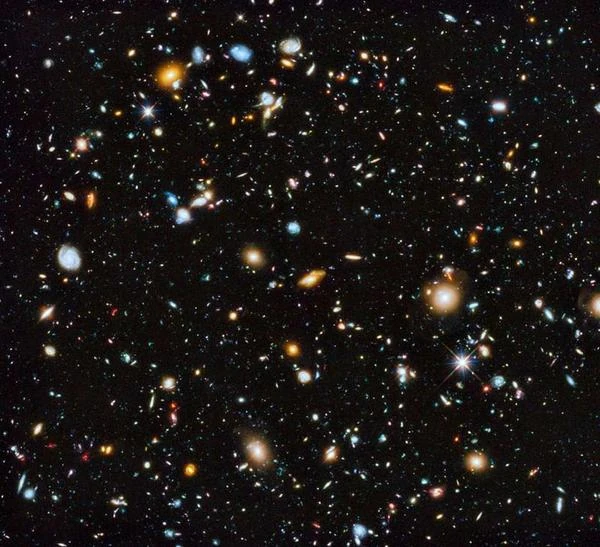Last updated: May 01, 2014
Beyond Our Senses!
Image description: “It is absolutely possible that beyond what our senses perceive, lie unsuspected worlds.”
The Great Concepts
“It is absolutely possible that beyond what our senses perceive, lie unsuspected worlds.” Albert Einstein (1879-1955).
Behind this quote from Einstein, we perceive the great scientific revolutions to come. New concepts will eventually approach observable facts and then be replaced by other concepts. Indeed, great scientific revolutions emerge when they go against our senses and emotions, to the point of appearing erroneous to us.
Our senses allow us to approach reality and feel the world around us. “Nothing ever becomes real till it is experienced.” John Keats (1795-1821), English Romantic poet. But if our senses show us the contours of the world, they also limit our reality. We only see the nectary region (the part of the flower that secretes nectar), the one that interests us the most.
The great fundamental concepts (Gravitation, Space, Time, Vacuum, Mass, Life, etc.) still seem mysterious to us. It would not be surprising if they correspond to something other than what our senses tell us about them.
Our Senses Deceive Us!
- Gravitation makes all bodies fall at the same speed regardless of their mass, this law of falling bodies goes against what our senses tell us.
- The Earth is not at the center of the universe, which goes against what our senses show us.
- The Earth rotates on its axis at 1,674 km/h while moving at 107,200 km/h around the Sun, which itself travels at 792,000 km/h, and yet our senses tell us nothing about these movements (see note).
- The space we consider as a passive vacuum can curve, twist, and ripple in the presence of masses, and worse still, it can also contract, which is counterintuitive.
- We thought time was absolute, but it is relative. In our daily lives, we live with the Newtonian image of space and time; we do not feel this flexibility of space-time. If we traveled at the speed of light, we would see space adjust to time, contract so that the speed of light remains constant. We now know that time is space, and space is time. In astronomy, the two concepts are strongly linked; we describe a distance with time (this star is 100 light-years away). We think of a distance, but we are talking about time and speed, that of light.
- The concept of vacuum, which we consider as the absence of matter, is even more astonishing. The vacuum is not nothing; on the contrary, according to physicists, a lot happens there. Virtual particles patiently await a certain energy to appear in reality. Empty space is a chaotic and bubbling place. The waves that pass through the vacuum vary the electromagnetic field, which is why the vacuum contains energy. Everywhere in the cosmos, we observe cosmic microwave background radiation.
- Mass is another equally mysterious concept. Billions of dollars have been invested to make the famous Higgs Boson appear among all possible energy windows. The Higgs field is the one that gives mass to particles. The Higgs mechanism fills the entire universe and all space with a mire, a field of bosons, which makes matter matter. The more particles have difficulty crossing this field, the more they acquire mass. Yet we can hardly conceive of matter without mass; the link between mass and matter is very strong in our minds. Indeed, what is an object without mass?
And what about the concept of life, the one that fascinates us the most. Our egocentric senses tell us that we are the result of a miraculous creation, but are we really alone in the Universe?
This question has been on the minds of our astronomers for a long time, and to answer it, they have invented the technology that allows us to "see" other planets in other worlds. Images of exoplanets are promised for the 2030s. Once again, our anthropocentric vision of the world is likely to be challenged if biosignatures are discovered in the atmosphere of other planets.
So, like Einstein, we know today that it is perfectly plausible that, beyond our sensory perception, lie unknown realities.
N.B.:
Why don't we feel the different speeds of the Earth's movement on its orbit and in space? The accelerations and decelerations exerted on us are too weak compared to the main force, gravity, which keeps us on the surface of the Earth. In other words, the centrifugal and centripetal forces that could shake us are much too weak to be felt.
